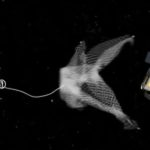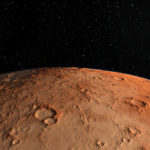Boom ushered in a new era of flight yesterday with the unveiling of XB-1, history’s first independently developed supersonic jet.
The socially-distanced unveiling of the demonstrator, which marks the completion of the design phase and start of the test flight programme next year, was watched online by 7,000 people, including astronauts and former Concorde pilots. The technology behind XB-1 and the subsequent development of Boom’s commercial airliner, Overture, will allow the demonstrator to undergo a 100 per cent carbon-neutral flight test programme.
Boom founder and CEO Blake Scholl said the unveiling was a major milestone towards Boom’s founding mission – making the world more accessible in a sustainable way. He told FINN that the “tyranny of social distancing” experienced during the COVID-19 pandemic had now made this mission even more important.
Enabling faster human connection
He told FINN: “What we’re missing is that human connection that can only happen with in person interaction. And so, Boom is building a successor to Concorde, more mainstream: think across the Atlantic in three-and-a-half hours or across the Pacific and as little as four and a half, allowing you to be there and experience more of the world’s people, places and culture in person.”
Scholl added that the roll out event marked the handover from creating the aircraft to the testing phase. “We’ve got 36 ground tests ahead of us,” he said, “Then next year, we’ll be in the air and setting speed records by the end of the year. It’s a really exciting moment for us.”
XB-1 is the technology demonstrator for Overture and has been built on a third of the scale of the commercial airliner. Scholl said it would take six years to build and flight test the Overture supersonic jet. Boom has recruited a team of experts from around the industry to design and build XB-1 and forged relationships with key suppliers and built a strong safety culture.
Supersonic jet will use 100 per cent sustainable fuel
Scholl added that XB-1 had the form factor of a fighter jet which features airliner technology and carbon fibre composites, advanced aerodynamics its propulsion intakes, augmented reality vision system to assist landing. As well as commercial applications, Boom is also in talks with USAF for a VIP version of the aircraft.
Scholl said sustainability was at the heart of Boom’s mission with both XB-1 and Overture being created to use new generation, sustainable jet fuels: “We believe that a world in which people can go more places, more often, is going to be a better world, a better planet for us all to live on,” explained Scholl.
He said Overture, which would carry 10,000s of people, would be the first airliner to be designed “from the ground up” on 100 per cent alternative fuels and would be “100 per cent carbon neutral.”
“We need to build a future in which it’s not just good enough to match the sustainability of current aviation. We need to completely remove the environmental barriers to travel, so people can feel free to travel much more than they do today without any fear of adverse effects on the planet and so we challenge ourselves to make Overture 100 per cent carbon neutral from day one,” said Scholl.
“So the great thing about flying about Overture is that you don’t have to worry about making more noise – it has the same or better noise profiles than other aircraft today. You don’t have to worry about what you’re doing to the climate, because it’s zero net carbon. And so you can just experience the world, people, places, and cultures, and not worry about the environment – we’ve taken care of that.”
The XB-1 virtual rollout highlighted some of XB-1 features including:
Shape: XB-1’s 71-foot-long fuselage has been optimally shaped for high-speed aerodynamic efficiency.
Materials: The carbon-composite airframe maintains its strength and rigidity, even under the high temperatures and stresses of supersonic flight.
Wing: The delta wing balances low-speed stability at takeoff and landing with high-speed efficiency.
Propulsion: Three J85-15 engines, designed by General Electric, provide more than 12,000 pounds of thrust, allowing XB-1 to fly at breakthrough supersonic speeds.
Cockpit ergonomics: Guidance and feedback from XB-1’s test pilots played a key role in cockpit design, which was the product of hundreds of hours of human factors and usability testing.
Forward vision system: XB-1 leverages a high-resolution video camera and cockpit display to give pilots a virtual window through the nose, providing superior runway visibility for landing.

